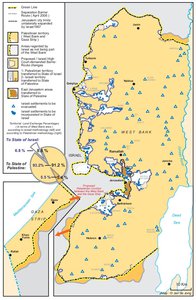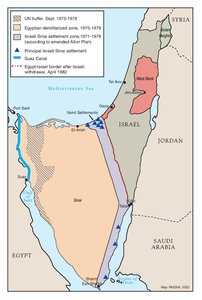THE CAMP DAVID ACCORDS, 1978-1979
Map Details
Egyptian President Anwar Sadat’s 1977 shock visit to Israel, where he addressed the Knesset, kick-started a momentous diplomatic process that led to the Egypt-Israel Peace Treaty of 1979. The Camp David Accords of 1978-79 saw Egypt regain the Sinai and Israel achieve the Arab recognition it desired. It also resulted in Egypt’s expulsion from the Arab League and, in 1981, Sadat’s assassination. By 1977, the gains of the 1973 War had lost their worth in Egypt, where economic decline, coupled with the debilitating cost of maintaining a standing army, presented a fresh threat to the regime’s credibility. A 1974 Sinai Disengagement Agreement, brokered by the US, had seen a realignment of Israeli and Egyptian forces to the east of the Suez Canal zone and, after leading to the 1975 ‘Sinai II’ accord, created a UN buffer between them,. However, the agreements were in truth US-Israel ‘engagement’ accords, with the US pledging $4 billion annually over three years to Israel in exchange for a stabilization of the canal and lowering of regional tension. As such, the agreement fell far short of a peace treaty and in itself offered no prospect for an agreed Israeli withdrawal or even negotiations toward that end. The Arab League’s 1974 endorsement of the PLO’s as “the sole legitimate representative of the Palestinian people” had thwarted Israeli ambitions of achieving a separate peace deal with Jordan and placed a Palestinian leadership Israel refused to recognize central to the attainment of the ‘comprehensive’ peace, upon which the Arab states insisted. Sadat’s initial peace formulations were guided by this ‘comprehensive’ doctrine, calling for multilateral talks aimed not only at Israel’s withdrawal from Sinai, but at its full implementation of UNSC Resolution 242. But Israel’s utter rejection of PLO involvement or discussion on the sovereignty of the OPT left Sadat isolated and the 1978 bilateral talks, held under US auspices, paid only lip-service to the Palestinians. Israeli Prime Minister Begin, recognizing Sadat’s fear of appearing to ‘sell out’ the Palestinians and Arab unity for his own gain, eventually acceded to a watered-down framework for partial Palestinian autonomy in the OPT, but kept its definition vague and free of real commitment. The weak autonomy plan, unacceptable to the PLO and Arab states, provided Begin with the opportunity to combine normalization and mutual recognition with Israel’s largest ‘confrontation’ state with an unstated international acknowledgement of de facto Israeli sovereignty over an expanded Israel, i.e., incl. the OPT. It was this factor, along with the gains of dividing the Arab World and diluting the pressure it could place on the UN or US, which allowed Begin’s ‘hawkish’ Likud government to accept a three-year staged withdrawal from the Sinai in exchange for peace. The final treaty was signed in March 1979. Four days later, Egypt was expelled from the Arab League. The Palestinian National Council (PNC) called the treaty, “a conspiracy which should be rejected and resisted by all means.” The PLO saw the autonomy idea for what it was: a sop to the Palestinians that the Israelis had no plan to implement. Not only was the autonomy plan never begun, but the domestic repercussions of Israel’s evacuation of its 17 illegal Sinai settlements (with a population of over 5,000) brought about a ‘compensatory’ buttressing of illegal colonization in the OPT. Settlement in Sinai had begun in 1967, but had only become a formal component of the extended Allon Plan in the early 1970s. The Labor governments of Meir and Rabin had pursued a plan to settle a thin strip along the eastern Sinai reaching Sharm Esh-Sheikh, while creating a settlement ‘buffer’ between Gaza and Egypt in the northeast of the peninsula. Thousands of indigenous Egyptian Bedouins were expelled from the target areas. Begin had encouraged and expanded the program even during the Camp David process - he planned to retire to the Sinai. The struggle waged against evacuation by the expansionist and settler lobby - both in the government and the activist movements - was bitter and sometimes violent. On 22 April 1982, Sinai’s ‘urban center’ Yammit was forcibly evacuated by Israeli troops and the Sinai withdrawal completed, on time, by 25 April. Only Taba, a 1.2-km2 patch west of Eilat, was retained by Israel, but the Sinai evacuation galvanized the settlement movements, spurring greatly increased activity in the OPT. The Camp David accords, with their OPT autonomy component, laid the groundwork for future diplomatic initiatives – incl. the failed Oslo process - and ushered in a new era of US-Arab relations, with Egypt at the fore of American regional defense plans. But Egypt’s recognition of Israel also cost it the leadership of the Arab World and Sadat his life. Peace with Egypt had consolidated Israel’s hold on Palestinian territory and freed it to focus on eradicating the newly developing PLO mini-state in Lebanon.
Related Maps
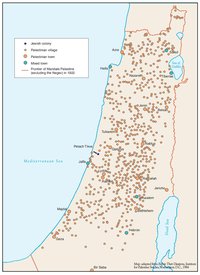
OTTOMAN PALESTINE, 1878
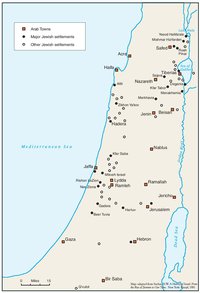
ARAB TOWNS AND JEWISH SETTLEMENTS IN PALESTINE, 1881-1914
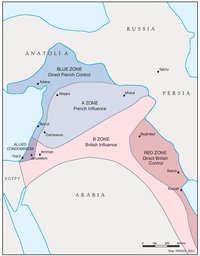
THE SYKES-PICOT AGREEMENT, 1916
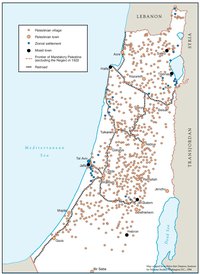
THE BEGINNING OF THE BRITISH MANDATE, 1920
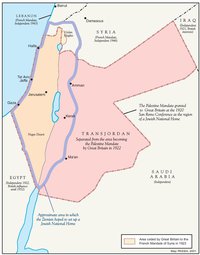
PALESTINE UNDER THE BRITISH MANDATE
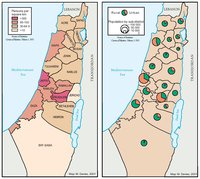
THE DEMOGRAPHY OF PALESTINE, 1931
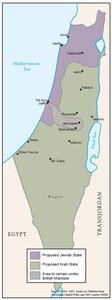
THE PEEL COMMISSION PARTITION PROPOSAL, 1937
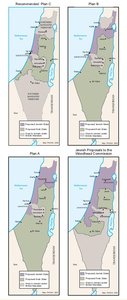
THE WOODHEAD COMMISSION PARTITION PROPOSALS, 1938
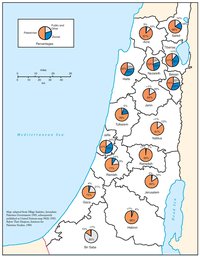
PALESTINIAN AND ZIONIST LANDOWNERSHIP BY SUB-DISTRICT, 1945
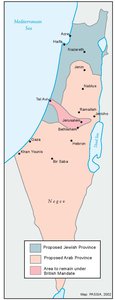
THE MORRISON-GRADY PARTITIONED TRUSTEESHIP PLAN, 1946
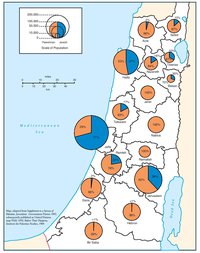
POPULATION OF PALESTINE BY SUB-DISTRICT, 1946
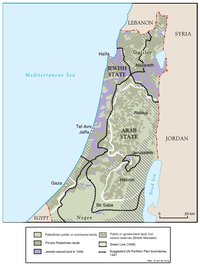
LAND OWNERSHIP IN PALESTINE, 1948
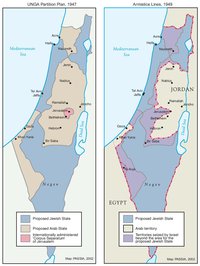
THE UNGA PARTITION PLAN, 1947 – THE 1948 WAR & THE 1949 ARMISTICE LINES
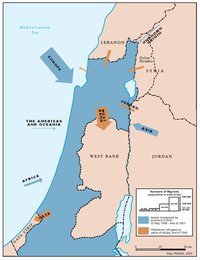
POPULATION MOVEMENTS, 1948-1951
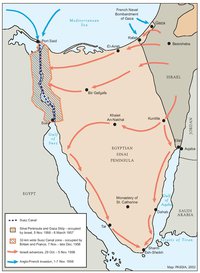
THE SUEZ WAR, 1956
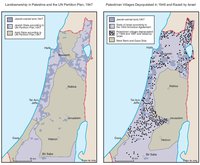
LAND OWNERSHIP IN PALESTINE AND THE UN PARTITION PLAN - PALESTINIAN DEPOPULATED AND DESTROYED VILLAGES, 1948-1949
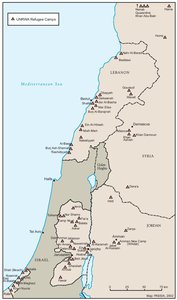
THE PALESTINIAN DIASPORA, 1958
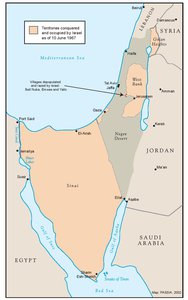
THE NEAR EAST AFTER THE JUNE 1967 WAR
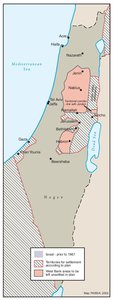
THE ALLON PLAN, JUNE 1967
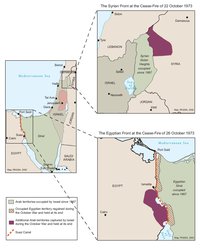
THE OCTOBER WAR, 1973
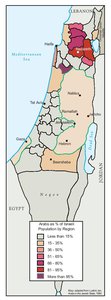
THE PALESTINIANS INSIDE ISRAEL, 1977
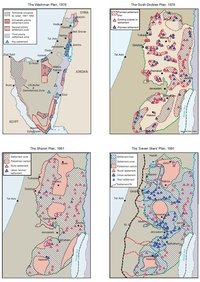
ISRAELI SETTLEMENT MASTER PLANS, 1976-1991
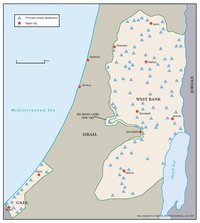
THE 1991 MADRID PEACE CONFERENCE & ISRAELI SETTLEMENTS
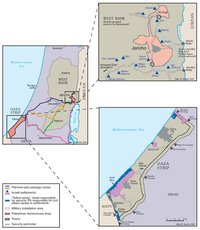
GAZA-JERICHO (OSLO I) AGREEMENT, CAIRO, 4 MAY 1994
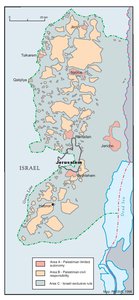
INTERIM (OSLO II) AGREEMENT, TABA, 28 SEPTEMBER 1995
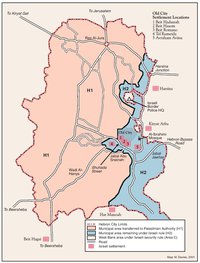
HEBRON PROTOCOL, 15 JANUARY 1997
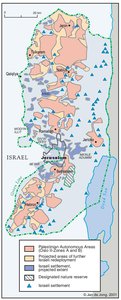
WYE RIVER MEMORANDUM, 23 OCTOBER 1998
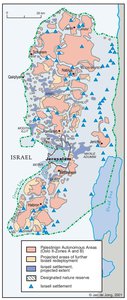
SHARM ESH-SHEIKH AGREEMENT, 4 SEPTEMBER 1999
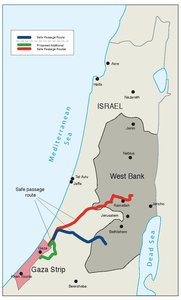
PROTOCOL CONCERNING SAFE PASSAGE BETWEEN THE WEST BANK AND THE GAZA STRIP, 5 OCTOBER 1999
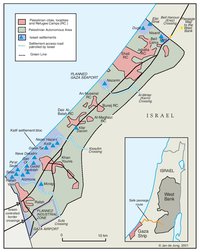
GAZA, 2000
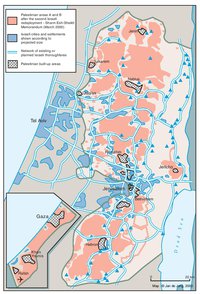
WEST BANK AND GAZA STRIP, MARCH 2000
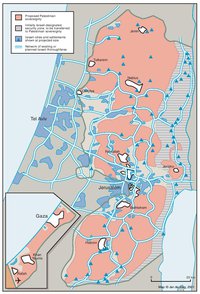
CAMP DAVID PROJECTION, JULY 2000
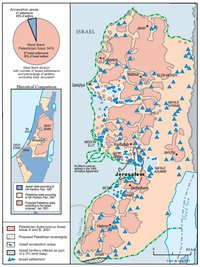
TABA TALKS PROJECTION, JANUARY 2001
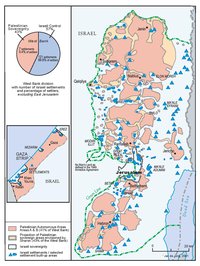
THE SHARON PROPOSAL, SPRING 2001
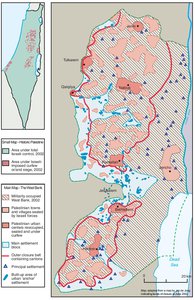
THE REINVASION OF THE PALESTINIAN TERRITORIES, 2001-2002
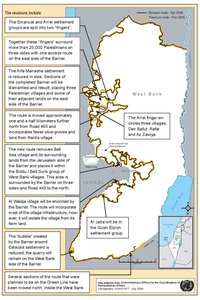
THE ROAD MAP, 2003
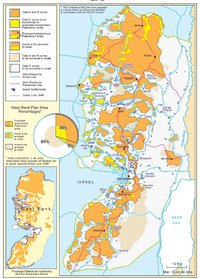
THE GENEVA INITIATIVE AND ACCORD, 2003
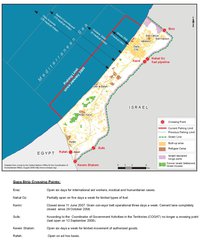
THE ISRAELI DISENGAGEMENT PLAN, 2003-2005
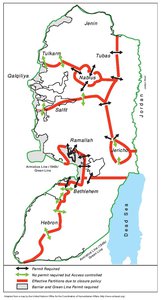
AGREED DOCUMENTS ON MOVEMENT AND ACCESS FROM AND TO GAZA, 2005
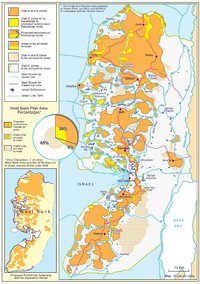
THE SETTLERS' PLAN FOR PALESTINIAN AUTONOMY, 2006
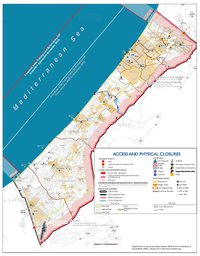
THE GAZA STRIP TODAY (2014)
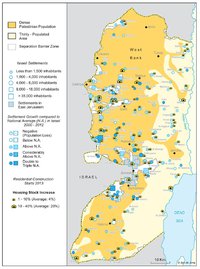
THE WEST BANK TODAY (2014)
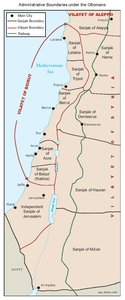
ADMINISTRATIVE BOUNDARIES

HEBRON
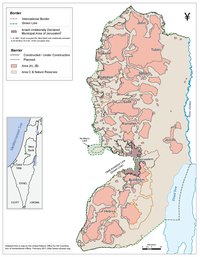
Area C
